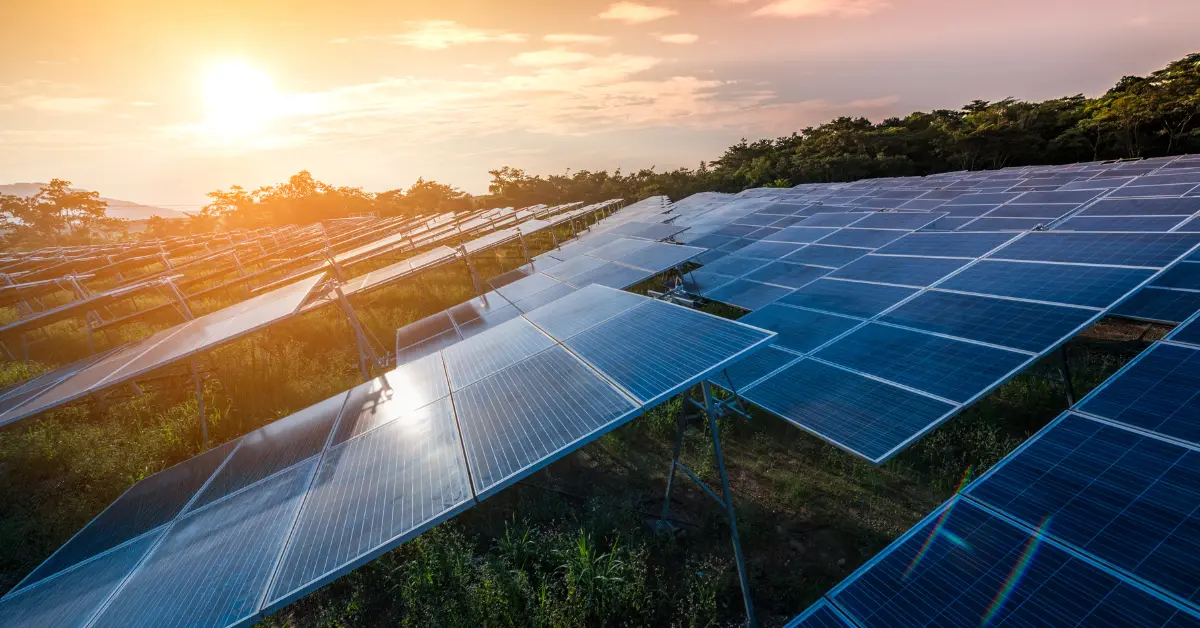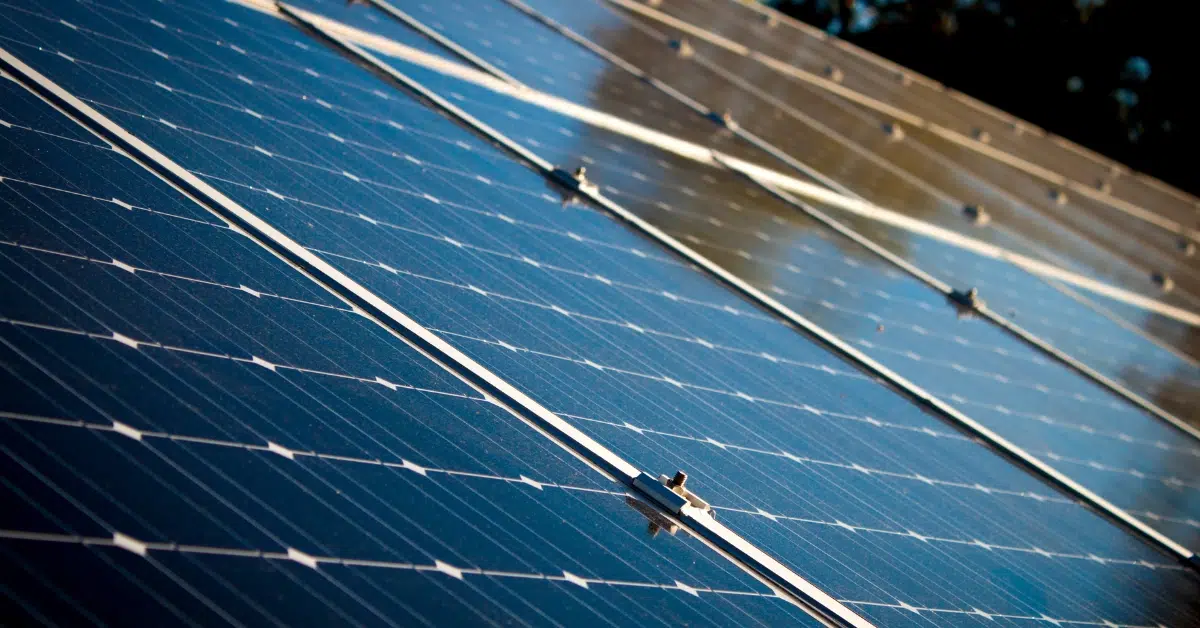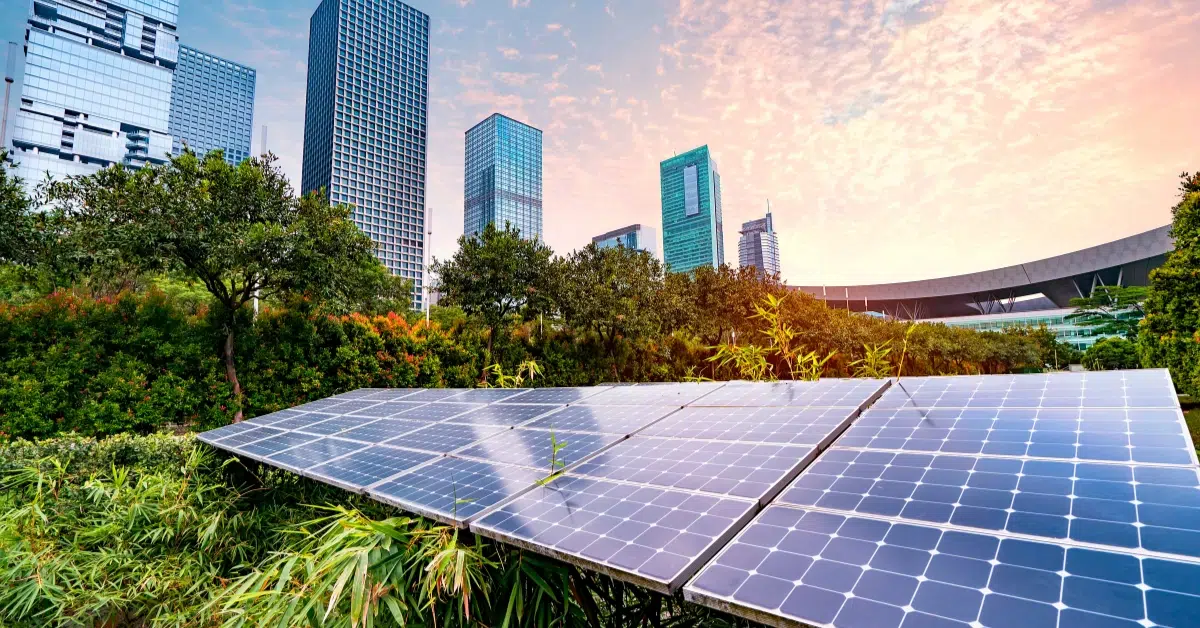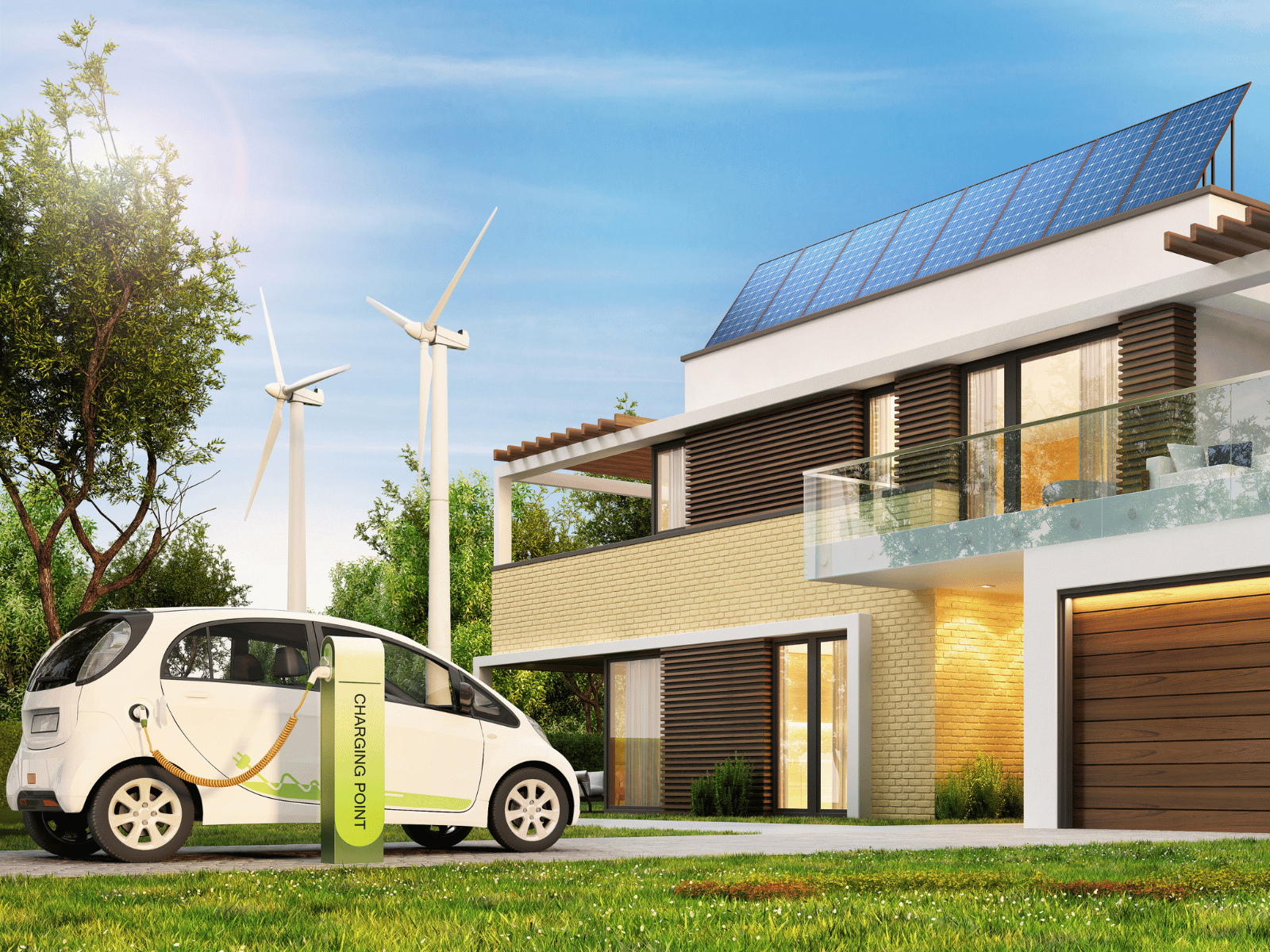Solar energy has become a crucial component of the global shift towards renewable energy. The United States has seen a remarkable increase in solar capacity, with an average growth of 37% per year over the last 22 years. Oklahoma, with its abundant sunlight and favorable weather patterns, holds significant potential for energy development. The state has already made strides with projects like the Choctaw Nation Solar Farm and Amazon’s 100 MW project in Kiowa County. These initiatives highlight the growing interest and investment in solar farms in Oklahoma.
What are Solar Farms?

Green Energy: Definition and Concept of Solar Farms
Basic definition of solar farms
Solar farms consist of large-scale installations of solar panels. These panels capture sunlight and convert it into electricity. The primary goal involves generating energy for distribution to the power grid. Solar farms in Oklahoma can cover vast areas of land, often in rural locations.
How solar farms work
Solar farms operate by using photovoltaic (PV) cells. These cells absorb sunlight and convert it into direct current (DC) electricity. An inverter then transforms DC into alternating current (AC), which powers homes and businesses. Solar energy systems require minimal maintenance, making them efficient and reliable sources of energy.
Types of Solar Farms in Oklahoma
Utility-scale solar farms
Utility-scale solar farms in Oklahoma generate large amounts of electricity. These farms can produce enough energy to power thousands of homes. For example, a solar farm with a 1.03 GW output capacity can power thousands of nearby homes. Utility-scale farms often span hundreds or even thousands of acres.
Community solar farms
Community solar farms allow multiple households to share the benefits of a single solar energy system. These farms provide energy to local communities, reducing individual costs. The Cedar Falls Utilities community solar farm in Iowa produces roughly 2,600 megawatt-hours of energy per year. This model makes solar energy accessible to more people.
Residential solar farms
Residential solar farms consist of smaller solar projects installed on private properties. These systems cater to individual households. Homeowners can generate their own energy and reduce reliance on the grid. Residential solar farms offer a sustainable and cost-effective energy solution.
Benefits of Solar Power Farms
Environmental benefits
Solar farms in Oklahoma provide significant environmental benefits. They reduce greenhouse gas emissions and decrease reliance on fossil fuels. The State Energy Data System shows that renewable energy sources like solar contribute to cleaner air and water. Solar farms help combat climate change by lowering carbon footprints.
Economic benefits
Solar farms offer numerous economic benefits. They create jobs in construction, maintenance, and operations. Local economies benefit from increased employment opportunities. Solar energy projects also attract investments, boosting regional development. The Electricity Data Browser highlights the economic impact of solar initiatives on local communities.
Social benefits
Solar farms provide social benefits by promoting energy independence. Communities gain access to affordable and reliable energy. Low-income households benefit from community solar projects, as seen in Grand Valley Electric Power’s initiatives in Colorado. Solar farms in Oklahoma enhance the quality of life by providing clean and sustainable energy.
Energy Potential in Oklahoma
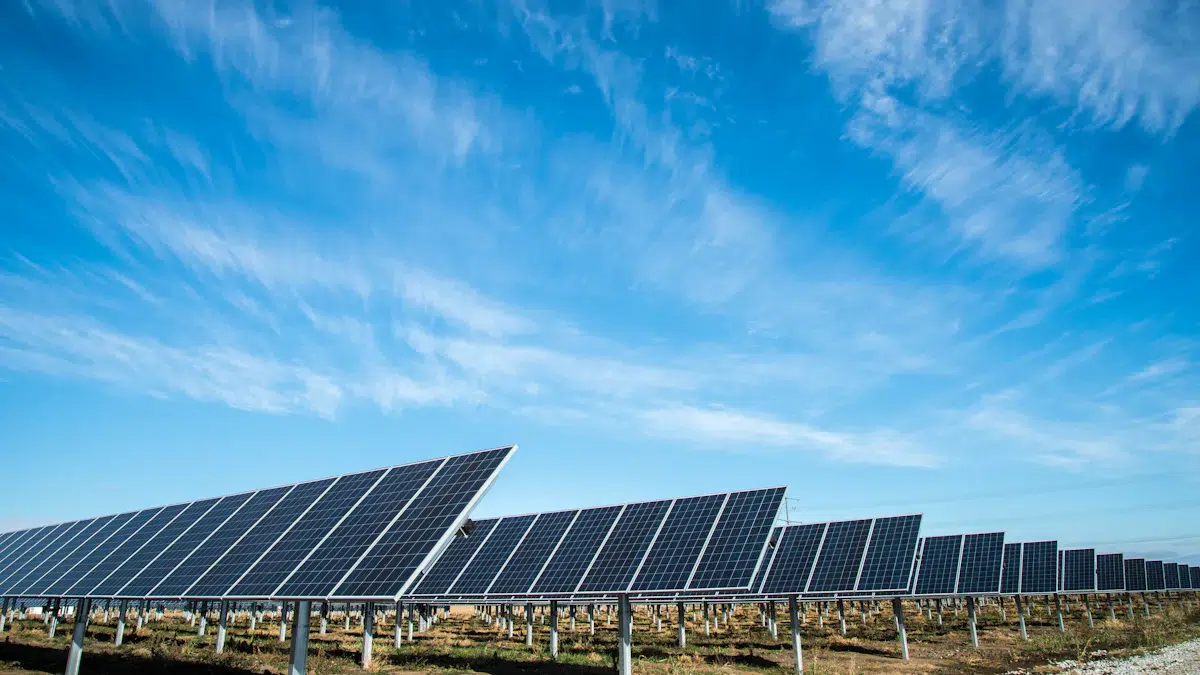
Geographic and Climatic Conditions for Green Energy
Sunlight availability
Oklahoma enjoys abundant sunlight, making it an ideal location for solar energy. The state receives an average of 5.5 peak sun hours per day. This high level of sunlight ensures efficient solar power generation. Solar farms in Oklahoma can harness this resource to produce significant amounts of electricity.
Weather patterns
Weather patterns in Oklahoma also favor solar energy production. The state experiences mild winters and hot summers. These conditions contribute to consistent solar energy output throughout the year. Occasional storms may temporarily affect solar farm operations, but overall, the climate remains conducive to solar energy.
Current Solar Power Programs
Existing solar farms
Oklahoma hosts several notable solar farm projects. The Choctaw Nation Solar Farm in Calera boasts a capacity of 6.1 MW. Amazon’s 100 MW project in Kiowa County marks another significant development. OG&E has completed two 5-MW solar projects for the Chickasaw and Choctaw Nations. These projects highlight the state’s growing commitment to renewable energy.
Planned projects
Future projects promise to expand Oklahoma’s solar capacity further. The North Fork Solar Project, with a planned capacity of 120 MW, is under construction. Enel North America plans to build a 3-gigawatt solar panel and cell factory in the state. Southwest Oklahoma will see a 1200-acre solar farm near Hobart, led by Recurrent Energy. These initiatives align with the Oklahoma Renewable Energy Goal of increasing solar power generation.
Solar Power Program Government Support and Incentives
State policies
State policies play a crucial role in promoting solar energy. Oklahoma offers various incentives to encourage solar farm development. The state provides tax credits and rebates for solar installations. These policies aim to make solar energy more accessible and affordable.
Financial incentives
Financial incentives further support solar energy projects. The federal Investment Tax Credit (ITC) allows a 26% deduction on solar system costs. Oklahoma also offers property tax exemptions for solar installations. These incentives reduce the financial burden on solar farm developers and promote investment in renewable energy.
Requirements for Establishing Green Energy Farms in Oklahoma
Legal and Regulatory Solar Power Program Requirements
Permits and licenses
Developers must secure various permits and licenses to establish solar farms in Oklahoma. The Oklahoma Corporation Commission oversees the regulation of energy projects. Developers must submit detailed plans and environmental impact assessments. Approval from local authorities ensures compliance with state laws.
Zoning laws
Zoning laws play a crucial role in determining suitable locations for solar farms in Oklahoma. Local governments designate specific areas for renewable energy projects. Developers must adhere to zoning regulations to avoid legal complications. Proper zoning ensures that solar farms do not disrupt existing land uses.
Technical Requirements
Land and space requirements
Solar farm land must meet specific criteria to support large-scale installations. Developers need vast, unobstructed areas to maximize sunlight exposure. Flat or gently sloping terrain proves ideal for solar panels. Proximity to transmission lines reduces costs and improves efficiency. Farm land requirements include considerations for soil stability and drainage.
Equipment and technology
Modern solar farms in Oklahoma rely on advanced equipment and technology. Photovoltaic (PV) panels capture sunlight and convert it into electricity. Inverters transform direct current (DC) into alternating current (AC). Tracking systems optimize panel orientation to follow the sun’s movement. High-quality materials ensure durability and longevity.
Financial Considerations
Initial investment
Establishing solar farms in Oklahoma requires significant initial investment. Costs include purchasing land, acquiring equipment, and securing permits. Financial incentives, such as tax credits and rebates, help offset expenses. Long-term contracts with utility companies provide stable revenue streams.
Maintenance costs
Maintenance costs play a vital role in the overall budget of solar farms in Oklahoma. Regular inspections and cleaning ensure optimal performance. Technicians monitor and repair equipment to prevent downtime. Efficient maintenance practices extend the lifespan of solar farms and enhance profitability.
Challenges and Solutions for Solar Farms in Oklahoma
Common Challenges
Land acquisition
Land acquisition poses a significant challenge for solar farm developers in Oklahoma. Developers need vast, unobstructed areas to maximize sunlight exposure. Finding suitable land that meets these criteria can prove difficult. Competition for land use with agriculture and other industries further complicates the process. High land costs also add to the financial burden on developers.
Regulatory hurdles
Regulatory hurdles create additional obstacles for solar farm projects. Developers must navigate a complex web of permits and licenses. The Oklahoma Corporation Commission oversees energy project regulations, requiring detailed plans and environmental impact assessments. Compliance with local zoning laws ensures that solar farms do not disrupt existing land uses. These regulatory requirements can delay project timelines and increase costs.
Potential Solutions
Community engagement
Community engagement plays a crucial role in overcoming challenges related to land acquisition and regulatory hurdles. Developers can host Community Solar Info Session events to educate residents about the benefits of solar energy. Involving the community early in the planning process fosters support and reduces opposition. Transparent communication helps address concerns and build trust. Successful Community Solar Projects demonstrate the positive impact of community involvement.
Policy advocacy
Policy advocacy offers another solution to regulatory challenges. Developers can collaborate with local governments to streamline permitting processes. Advocating for favorable policies and incentives encourages the development of solar farms in Oklahoma. Participation in Community Solar Webinar events provides a platform to discuss policy changes and share best practices. Engaging with policymakers ensures that regulations support the growth of renewable energy.
Case Studies:
- BrightSource Challenges and Prospects in Concentrated Solar Power Plant: BrightSource faced environmental challenges and competition from cheaper solar power technology. Difficulty in attracting investors for new thermal storage technology added to the hurdles. Despite these challenges, community engagement and policy advocacy helped address some issues.
Future of Energy Farms
Trends and Innovations
Technological advancements
Solar technology continues to evolve rapidly. Advances in materials and design enable solar panels to convert more sunlight into electricity. This improvement makes solar installations more practical and cost-effective. Researchers focus on increasing solar cell efficiency. New materials and flexible designs contribute to this progress. These innovations make solar photovoltaics more accessible and efficient.
Market trends
The market for solar energy shows promising growth. More companies invest in solar projects. This investment drives down costs and increases availability. Consumers show greater interest in renewable energy sources. Government incentives and policies support this trend. The demand for clean energy solutions rises steadily. This shift encourages further development of solar farms.
Long-term Impact
Environmental impact
Solar farms offer significant environmental benefits. They reduce greenhouse gas emissions. This reduction helps combat climate change. Solar energy decreases reliance on fossil fuels. Cleaner air and water result from this shift. Solar farms contribute to a healthier planet. The long-term environmental impact proves substantial.
Economic impact
The economic impact of solar farms extends widely. Job creation occurs in construction, maintenance, and operations. Local economies benefit from increased employment opportunities. Investments in solar projects boost regional development. Financial incentives make solar energy more affordable. The economic benefits of solar farms enhance community prosperity.
Solar farms play a crucial role in the transition to renewable energy. Oklahoma’s abundant sunlight and favorable weather patterns make it an ideal location for solar energy projects. The state has already seen significant developments, such as the Choctaw Nation Solar Farm and Amazon’s 100 MW project in Kiowa County. Establishing solar farms in Oklahoma requires adherence to legal, technical, and financial requirements. The future of solar energy in Oklahoma looks promising with ongoing advancements and increasing investments. Solar energy can significantly impact the state’s economy and environment.

